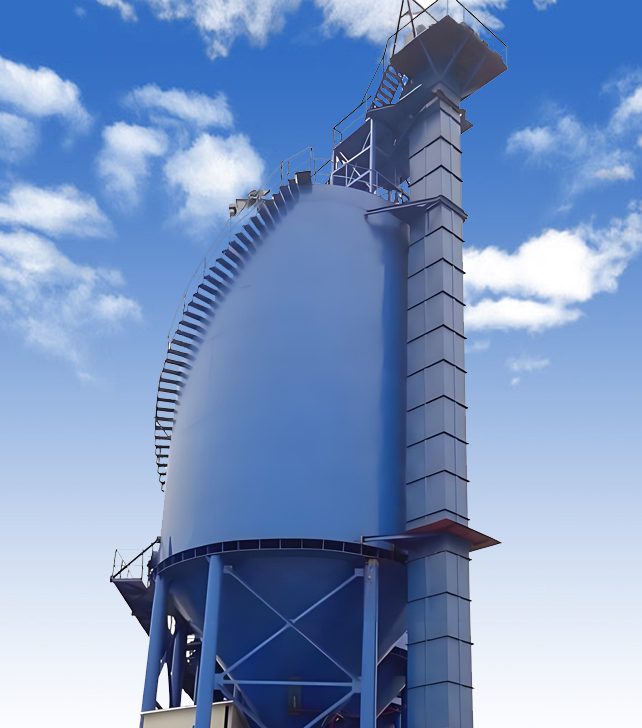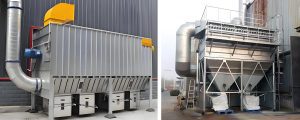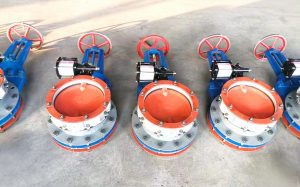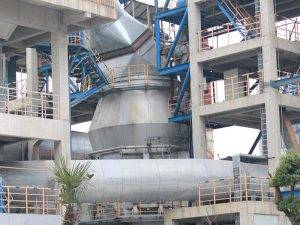In 2022, a cement plant initiated a project to renovate its elevador de baldes discharge chutes. They entrusted Nantong Darko Building Materials Machinery Co., Ltd. with the entire process, from production to equipment installation and operation. Darko quickly dispatched technicians to the site for an on-the-spot evaluation. They identified several key issues with the discharge chutes.
Main Issues
1.Insufficient Wear Resistance: The discharge chutes used wear-resistant manganese steel plates, which had poor durability. This led to multiple wear-through points and material leakage. The worn manganese steel plates became uneven, causing material to stick.
2.Unreasonable Structural Design: The angle in the middle of the discharge chutes was too steep, failing to effectively cushion the material. As a result, the lower part of the chute experienced severe wear.
3.Uneven Design of the Sloped Chute: The design of the sloped section was uneven. Material concentrated on one side, while the other side showed little wear. This uneven force distribution caused severe wear on the side in contact with the material and led to material accumulation.
Solutions
To address these issues, Darko's technicians proposed practical solutions:
1.Optimize Overall Structure: They adjusted the angle in the middle of the discharge chutes to reduce the impact force of the material. This modification effectively slows down and cushions the material.
2.Redesign the Sloped Chute: They changed the lower sloped section from an irregular rhomboid shape to a parallelogram. This design distributes the impact force more evenly across the bottom and sides, extending the equipment's lifespan.
3.Replace Wear Materials: They substituted wear-resistant ceramic liners for the manganese steel plates. The ceramic liners offer superior wear and corrosion resistance, and their smooth surface reduces material buildup.

Simulation Testing and Expected Results
Darko's technicians conducted simulation tests using the new solutions. They expect to increase the lifespan of the bucket elevator discharge chutes by 3 to 5 times, improve work efficiency by 3% to 12%, and reduce the likelihood of material blockage by 20% to 30%.
These design optimizations will significantly enhance the performance of the discharge chutes. They will ensure the cement plant's production efficiency and the long-term stability of the equipment. If you are facing similar issues, feel free to contactar-nos. We are ready to provide you with professional solutions.





